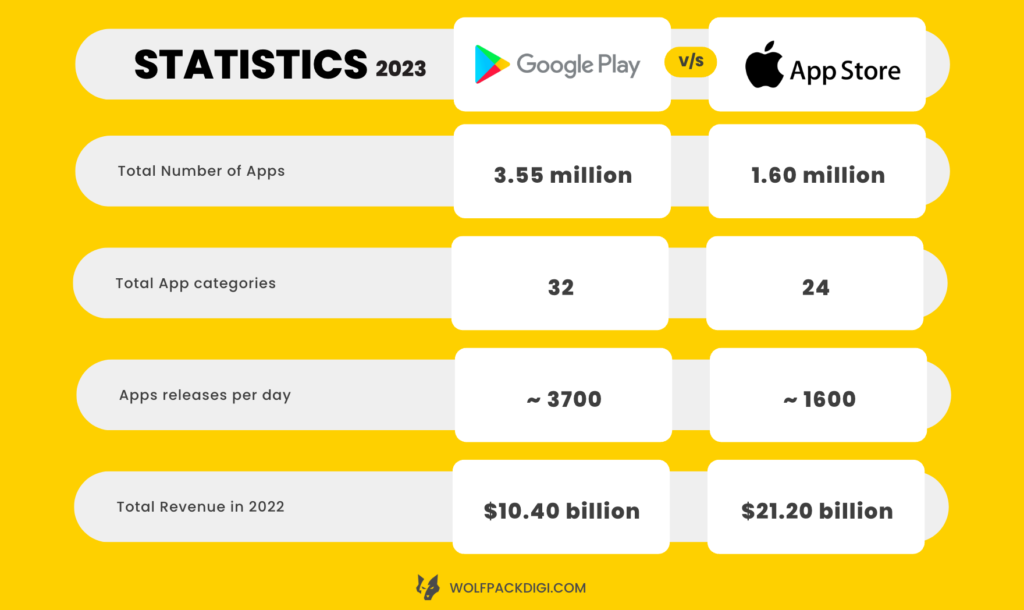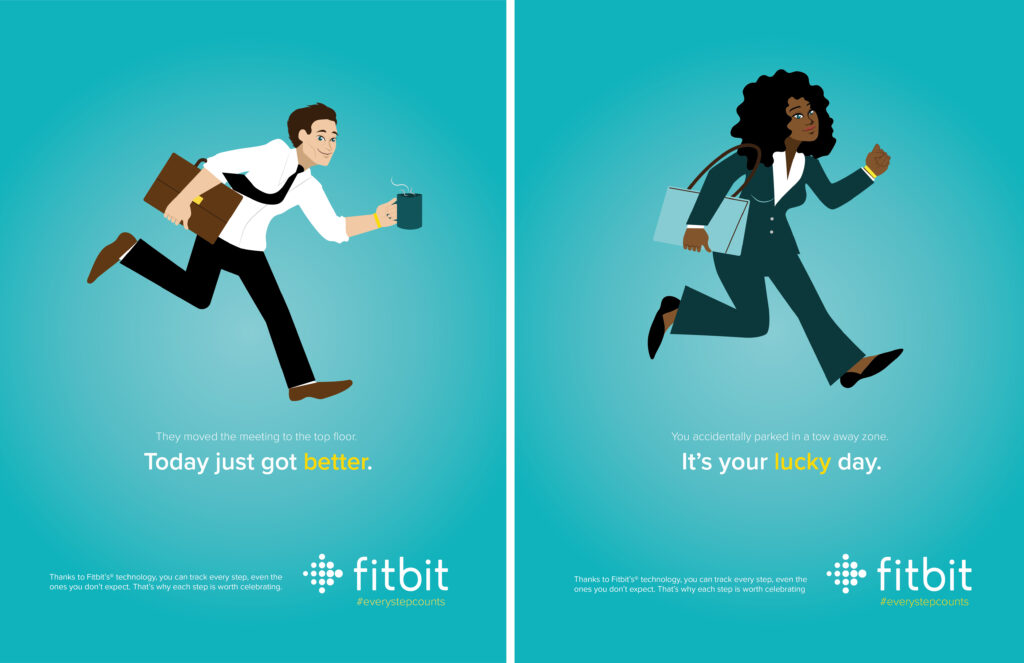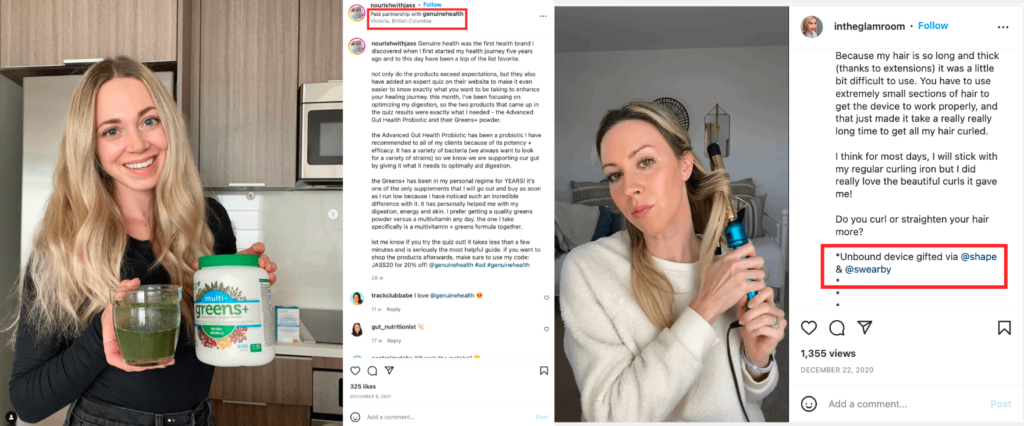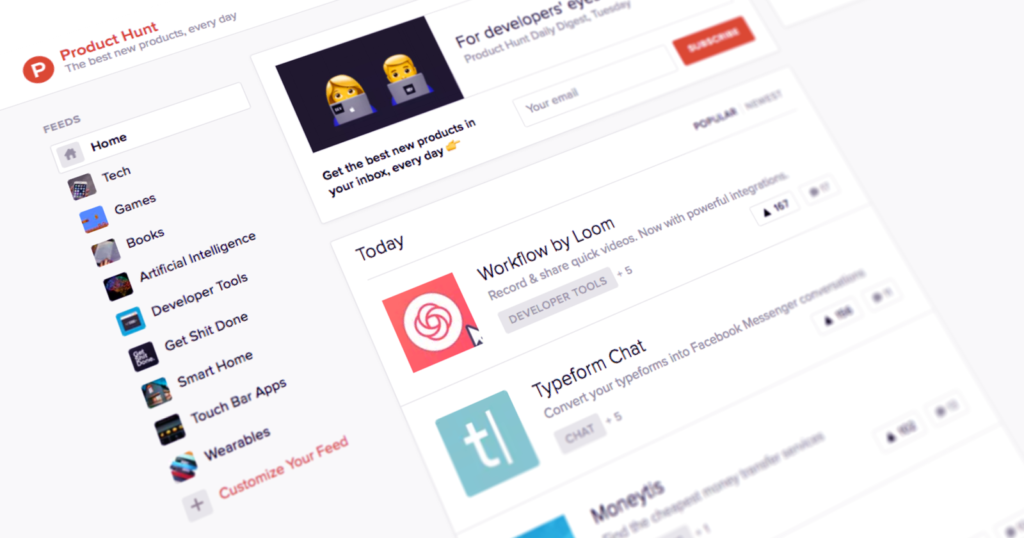With millions of apps available for download on well-known app shops like Apple’s App Store and Google Play, the mobile app business has grown more competitive in recent years. With so many alternatives accessible, it’s crucial for app developers to strategically promote their products in order to stand out and draw consumers.
The success of both new and current mobile applications depends on marketing. Marketing may help new applications reach their target audience and build brand awareness. Marketing for already-released applications may help them build their user base, remain relevant in a market that is changing quickly, and generate more income.
Recent statistics show that the Google Play Store and Apple App Store both see the daily release of 500 new apps on average.
The significance of efficient marketing is now being highlighted by changes in the mobile app business. The worldwide mobile app industry is anticipated to reach $581 billion by 2022, with in-app advertising and app purchases accounting for the majority of income. According to a different Sensor Tower research, the top 1% of app publishers will account for 75% of all app store income in 2020. These trends demonstrate how fiercely competitive the mobile app market is growing and how app creators must spend money on marketing to boost their chances of success.
Recent statistics show that the Google Play Store and Apple App Store both see the daily release of 500 new apps on average. Due to the intense competition in this industry, only a few of these apps find considerable success. According to a survey, just 0.01% of all mobile apps in the App Store and Google Play Store ever achieve financial success. This indicates that the success rate for apps is low. This underlines the need for efficient marketing for mobile applications because it may significantly affect such apps’ chances of success in a market as competitive as this one.

In this blog, we will explore the importance of marketing for both new and existing mobile applications, discussing the benefits and key considerations for app developers looking to maximize the potential of their apps. Whether it’s through social media marketing, influencer marketing, paid advertising, or other tactics, the key to success is to have a clear understanding of your target audience and a well-planned marketing strategy.
The Importance of Marketing for New Applications
In order to be seen and get users, new mobile applications must engage in marketing. The following are some of the main advantages of marketing for new mobile apps:
- Enhanced brand recognition: The app’s reputation can be established and its brand awareness may be increased with a powerful marketing effort.
- Reach the target market: A new app may create buzz by connecting with its target market through influencer marketing and targeted advertising.
- With so many applications available, it can be difficult to stand out in a crowded market. By highlighting its distinctive features and value proposition, marketing may make a new software stand out.
- Engage users: An effective marketing effort may also aid in engaging users and boosting downloads.
For example, the popular food delivery app DoorDash was able to quickly gain traction in the US by investing in marketing. The company used a combination of targeted advertising and influencer marketing to reach its target audience and promote its unique features. This helped DoorDash stand out in a competitive market and become one of the leading food delivery apps in the US.

The Importance of Marketing for Existing Applications
For already-available mobile applications that wish to keep and expand their user base, marketing is equally crucial. The following are some of the main advantages of marketing for current mobile apps:
- Retain and expand the user base: An established app may expand its user base and draw new users by pushing new features and remaining relevant.
- Keep up with the competition: As the industry changes, applications that don’t improve and remain relevant risk becoming obsolete very rapidly. By highlighting their distinctive qualities and brand image, marketing may help current applications stay relevant.
- Marketing may help an established app generate more income by luring new users and keeping hold of current ones.
For instance, the well-known fitness app Fitbit has kept up its marketing spending to remain relevant in a cutthroat industry. To maintain its user base and draw in new ones, the business has marketed its new services, such as its activity tracker and health app. Due to this, Fitbit has been able to grow its business and keep its place as the top US fitness app.

The success of both new and existing mobile apps depends greatly on marketing, to sum up. App creators may boost their chances of success and realise the full potential of their app by spending money on marketing. The secret to success is having a clear grasp of your target demographic and a well-planned marketing strategy, regardless of whether you use social media marketing, influencer marketing, paid advertising, or other strategies.
Ways to Market Mobile Applications
1. App Store Optimization (ASO)
App Store Optimization (ASO) is optimising your app’s visibility in the app store search results by optimising its title, description, keywords, and other factors. This can help increase the visibility of your app and attract more organic downloads. ASO is important for both new and existing mobile apps, as it helps to increase the chances of being discovered by potential users who are searching for related apps.This enables users to use the app, place orders, and modify their account information.
2. Use of social media
Social media platforms like Facebook, Instagram, Twitter, and LinkedIn are good places to sell mobile applications. You may raise brand recognition, direct visitors to your app’s download page, and create buzz about your app by setting up a social media presence and interacting with your target market. For instance, you may reach a highly focused audience by using the paid advertising alternatives offered by Facebook and Instagram.
3. Using influencers
Partnering with social media influencers that have a sizable and active following among your target demographic is known as influencer marketing. These influencers can encourage downloads by promoting your app to their following. For instance, Fashmates, a fashion and beauty app, collaborated with influencer Arielle Charnas to market their app to her millions of Instagram followers, which significantly increased the number of app downloads. Startups and businesses can also find local influencers who are relatively more affordable which would help them mutually to grow as individuals and organisations. Local influencers have relatively low engagement but they are also a great place to start the organisation’s marketing.

4. Email Promotion
Email marketing may be utilised to connect with prospective new users and keep your app’s current users interested. To your email subscribers, you may send newsletters, advertising offers, and app updates. For instance, the meditation app Headspace employs email marketing to keep users interested and up to date on changes and additions to the programme.
5. Paid Promotion
You may utilise paid advertising to reach a larger audience and encourage more app downloads using services like Google AdWords, Facebook Ads, and Apple Search Ads. Based on variables like age, region, and hobbies, these platforms let you target particular audiences. In order to reach more people and improve their exposure in search results, for instance, the food delivery service GrubHub employs sponsored advertising.
6. Public Relations
Building relationships with journalists and media organisations is part of public relations (PR), which aims to increase awareness of your app. This can promote downloads and raise brand recognition. As an illustration, the travel app Hopper utilised PR to gain exposure in prestigious magazines including The New York Times, CNN, and Forbes, which led to a sharp rise in app downloads.
7. Content Promotion
To establish relationships with your target audience and encourage downloads, use content marketing to produce and distribute quality and pertinent information. This may be done through creating blog articles, videos, infographics, and other content forms that enlighten and educate your audience. The fitness app MyFitnessPal, for instance, utilises content marketing to inform its users about healthy eating and provide them with meal plans and recipes.
Unique Ways to Market Mobile Applications
1. Listing on Ranking Websites
Businesses can post their apps on websites like ProductHunt to increase their brand visibility. ProductHunt is a platform for discovering and sharing new products. This platform’s listing of your app can increase its visibility and help it get in front of more users. ProductHunt is especially well-liked by tech-savvy consumers who are constantly searching for fresh and cutting-edge items. You may connect with this community and develop your brand by adding your app to our platform. There are other ranking websites like saashub.com, figma.com, notion.so, indiehackers.com, and more.

2. Getting visibility on other virtual
In addition to the traditional app stores like Apple’s App Store and Google Play Store, apps can also be listed on other virtual stores like Etsy, Amazon Store, Samsung, Thrive Store, etc. This can be a great way to reach a new audience and increase visibility for your app. By listing your app on these marketplaces, you can take advantage of their massive customer base and reach millions of potential users.
3. Creating a referral program
An efficient technique to encourage current users to recommend their friends to your app is through a referral scheme. You may encourage users to promote your app and help you find new users by providing incentives like discounts or awards. For example, Uber has a referral programme that offers free trips to both the referrer and the person they have referred.
4. Leveraging the power of user-generated content
To generate buzz for your app, you should encourage users to publish reviews and discuss their experiences on social media. You may utilise user-generated content to promote your app and attract new users by leveraging the impact and reach of your consumers. For instance, by encouraging customers to post about their vacation adventures on social media, Airbnb has amassed a sizable following.
5. Partnering with other apps or businesses
In order to cross-promote and attract new users, partnering with other applications or companies might be a smart strategy. For instance, if your app delivers food, you might collaborate with one that rates restaurants to expand your user base. You may reach new users who would not have found your app on their own by collaborating with other applications or companies.
6. Hosting giveaways or contests
You may create excitement and draw in new users by holding freebies or competitions. You may entice users to join and spread the news about your app by providing incentives or rewards. As an illustration, Instagram has held a lot of contests where users may compete to win prizes by uploading images to the service.
7. Leveraging the power of video
Creating engaging trailers, tutorials, and demos to showcase the app’s features and benefits can be a great way to reach new users. By leveraging the power of video, you can give users a better understanding of what your app does and why they should download it. For example, TikTok has become a hugely popular app thanks to its engaging and entertaining video content.
Conclusion
In conclusion, marketing is essential for the success of mobile applications, both new and old. To stand out, draw in, and keep consumers in the extremely competitive mobile app industry, it is crucial to have a strong marketing plan. The different marketing techniques covered in this blog, including App Store Optimization, social media marketing, influencer marketing, email marketing, paid advertising, public relations, content marketing, listing on ProductHunt and getting visibility on Amazon store, developing a referral programme, utilising user-generated content, partnering with other apps or businesses, hosting giveaways or contests, and utilising the power of video, can all play a significant role in achieving success.
Marketing expenditures are essential to the success of mobile applications. A properly implemented marketing plan may significantly impact user acquisition, brand exposure, and eventually income. To ensure the success of their mobile apps, it is crucial for app developers and company owners to prioritise marketing and allot sufficient resources.
